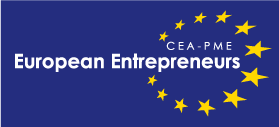
Dear Readers,
Dear Entrepreneurs all over Europe,
On October 25th, the EU-Energy ministers will meet to finally – and hopefully – find a way towards a common European approach to reducing the still dramatic energy costs in Europe. The drafts circulating indicate that there might be a call for European solidarity. This means a common European budget for most member states, particularly compensating those single members’ spending plans that can afford to pay the energy bills for their citizens and SMEs, like Germany or The Netherlands. Maybe to avoid this, Germany finally signalled that a common European price cap on gas might make sense. However, somehow there will be a European solution, i.e. as always, a mix of measures which each member state can choose from, and everybody will be happy. More or less.
We hope so. But we are afraid it will be less.
Because happy would mean, that after this winter, not only the vast majority of companies will have survived without a dramatic increase in insolvencies, but also energy prices would go down to an acceptable level, maintaining Europe’s competitiveness. But many experts say this will never happen again. And we know this is also not the plan of the European Commission. The policy package “Fit for 55”, the intermediate step to reduce CO2 by 2030 to 55% of the emissions of 1990, which is on the way to full climate neutrality in 2050, was proposed in 2021 by the Commission and approved by the majority of the Parliament. This package was already planned in 2021 to increase CO2 pricing. It was done without reforming the energy market (namely without decoupling carbon dioxide fuel prices from that of energy produced from wind, water and sun – the Merit Order System – while it was totally clear already in 2021 that rising CO2 prices would have pushed energy costs to significantly higher levels) and also without increasing the market of CO2-certificates. Both led to increasing energy costs already at the beginning of last winter. Russia’s brutal attack on Ukraine and the reduction of gas supplies as the answer to Europe’s undoubted sanctions did only the rest.
It would be important to name these facts again and again: it is not all and not only about speculation, sanctions or war. The EU, which is the citizens and parties and member states and institutions that strongly wanted this policy in 2021, gave the kickoff to this development. And also, rejecting the revision of the Emission Trading System still in June 2022 adds up to this. So if we have the highest energy prices ever, higher than any other country and block outside of Europe, it is not happening by chance and because of some “bad” people out there. As a Spanish colleague pointed out, it is economic harakiri that we decided to undertake on our own. I am afraid this colleague is right.
As European Entrepreneurs CEA-PME, we are definitely not representing “a fossil lobby”, and we are far from being the strongest “industry lobby” one can find. We simply try to save thousands and tens of thousands of small and medium-sized companies from bankruptcy, collapsing only because they couldn’t afford to be already climate-net-zero-ready in 2022, as some of those that are defending the current EU energy policies suggest.
But unfortunately, these companies did have a COVID-19 pandemic with repeated lockdowns, global supply chains breaking up, with an increasing and dramatic lack of skilled workers in many sectors for 10-15 years because of an irreversible demographic change. They had to withstand global competition, particularly against China, but continued to create jobs and pay taxes in their home continent, Europe. They also had to introduce digitalisation and technological innovation. Oh yes, they also had governments that made their countries fully dependent on Russian gas or domestic coal. And also: the European Union has no alternative policy for a base load energy supply if we cut fossil fuels and nuclear power. Let’s do it, but only when we have an alternative. That would have been the first step towards reform, wouldn’t it? Is green hydrogen already sufficiently up and running? Maybe I lost a detail again…
Is it that difficult to admit that the project of climate neutrality needs to get the majority of SMEs on board, and that means helping them to do so as best and as fast as possible without pressing them with artificial market interventions into economic failure?
Yes, they say RePowerEU would be the answer, but promising investments in the future for a better performance tomorrow, while leaving all factors that drive prices to their highest peaks as they are, is saying to a dying woman or man, don’t worry, in 5 to 10 years we will have a cure for your disease. It is cynical. And by the way, where do I currently find solar panels and a craftsman to install them?
Has someone considered the political price we will have to pay if we don’t get the SMEs on board?
Stefan Moritz
Secretary General
European Entrepreneurs CEA-PME



I like the post from my business mentor @stefan mortiz